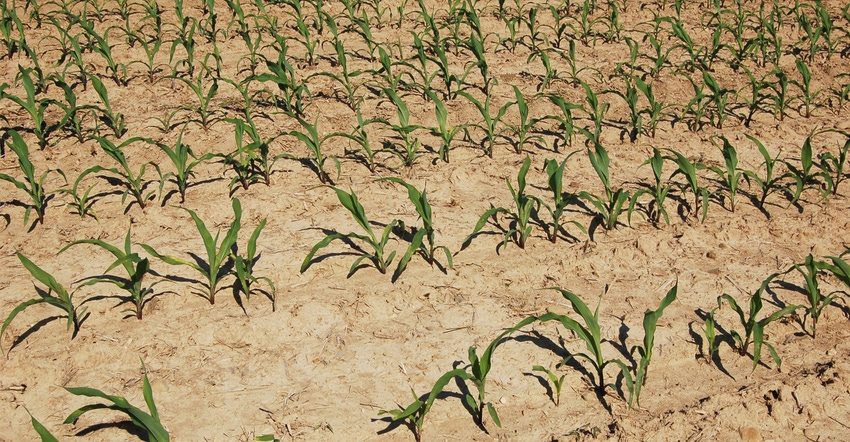
With pressure from low grain prices, what can you do to increase corn yields without adding input costs? Corn plants can be great yielders, but they’re also very temperamental about their surroundings. They don’t like too many neighbors, and if given the opportunity, they will hog the space around them.
Plants that emerge even one to two days later than their neighbors have difficulty competing for sunlight, water and nutrients. They produce smaller ears, nubbins or no ears. They end up acting worse than weeds because herbicides won’t kill them and eventually, they hurt the crop yield rather than contributing to it.
Protecting the microclimate, or the neighborhood, of each plant is very important for maximizing yield from each field. Adequate plant establishment is a critical factor in increasing yields.
Everyone knows the importance of equidistant spacing within the row so each corn plant has an equal opportunity to grow and produce the maximum number of kernels. Planting depth and uniform emergence are equally or even more important for each plant to perform well and produce to its maximum genetic potential. Here are six factors that can affect seedling emergence and stand establishment that you can control to some degree.
1. Seed quality. Make sure you have quality seed with high germination. Most seed companies do their best in providing their customers with the highest-quality seed that meets germination and purity standards. However, it’s a good idea to check the tags and make sure you received the seed grade you ordered.
2. Seed treatments. Make sure the amount of seed treatments and inoculant coatings on the seed is not so high that it affects delivery, plantability and emergence. When selecting hybrids, pay special attention to seedling emergence and early vigor ratings.
3. Seedbed preparation. Everyone knows the importance of proper seedbed preparation. You just can’t afford to start planting until the soil conditions are right. Ignore the neighbor who likes to be the first to plant.
4. Planting depth. The right planting depth is critical for uniform seedling emergence. Trial planting runs are a must. Check seed drop to make sure you’re getting the desired seeding rate and placing seeds at the desired depth.
5. Planter manual. Study your planter manual. Go at the recommended speed. Some newer planters can go faster and still plant precisely, but be very careful. You may have lots of acres to plant. However, you want to plant only once.
6. Seed-to-soil contact. Proper seed-to-soil contact is very important for uniform emergence of seedlings.
Studies conducted by Indiana Prairie Farmer Editor Tom J. Bechman, Purdue University Extension Throckmorton farm crew members and myself on planting speed, planting depth and down pressure have indicated that each factor can affect germination and emergence of corn seedlings. Paying attention to these factors can pay big dividends in improving corn yields. Unless the planter needs repairs, you may not have to spend a dime to reap the benefits of doing these tasks correctly.
Nanda is president of Agronomic Crops Consultants LLC. Email him at [email protected], or call him at 317-910-9876.
About the Author(s)
You May Also Like




